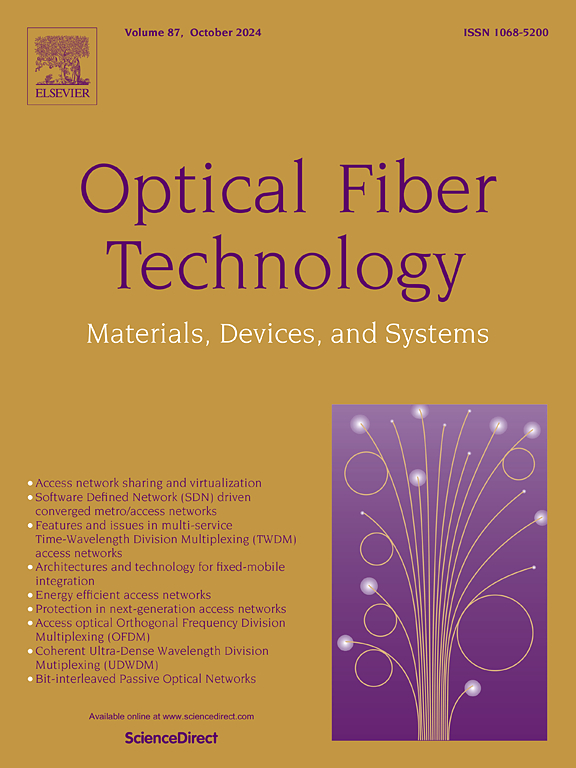Modelling and design of broadband low-crossing FBG-integrated three-dimensional geophones
IF 2.6
3区 计算机科学
Q2 ENGINEERING, ELECTRICAL & ELECTRONIC
引用次数: 0
Abstract
A three-dimensional fiber Bragg grating (FBG) geophone with single inertial mass is presented and experimentally demonstrated. The design, fabrication and optimization of the FBG geophone are analyzed. A theoretical model of the one-body 3D geophone based on FBG is established, and the mechanical structure is designed to optimize the geophone’s structural parameters and improved consistency of sensitivity across the three spindles. Meanwhile, the distribution of FBG is skillfully utilized to improve the sensitivity in all directions while reducing crosstalk. The experimental results show that the bandwidths of the sensor in the X, Y and Z directions are from 20 Hz to 500 Hz, and the flat range sensitivities in the X, Y and Z directions are from 30.87 to 63.52 pm/G, 32.2 to 70 pm/G, and 31.22 to 64.7 pm/G, respectively, which indicate that the parameters of this type of sensor in the three directions have good consistency and are in accordance with the design concept. The random error of the 3D geophone is also analyzed by Allan variance method. Such geophones have potential theoretical significance and practical applications in the fields of seismic exploration, geology and structural health and safety monitoring.
求助全文
约1分钟内获得全文
求助全文
来源期刊

Optical Fiber Technology
工程技术-电信学
CiteScore
4.80
自引率
11.10%
发文量
327
审稿时长
63 days
期刊介绍:
Innovations in optical fiber technology are revolutionizing world communications. Newly developed fiber amplifiers allow for direct transmission of high-speed signals over transcontinental distances without the need for electronic regeneration. Optical fibers find new applications in data processing. The impact of fiber materials, devices, and systems on communications in the coming decades will create an abundance of primary literature and the need for up-to-date reviews.
Optical Fiber Technology: Materials, Devices, and Systems is a new cutting-edge journal designed to fill a need in this rapidly evolving field for speedy publication of regular length papers. Both theoretical and experimental papers on fiber materials, devices, and system performance evaluation and measurements are eligible, with emphasis on practical applications.
 求助内容:
求助内容: 应助结果提醒方式:
应助结果提醒方式:


